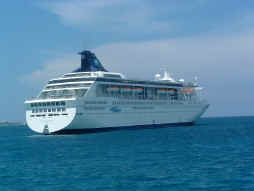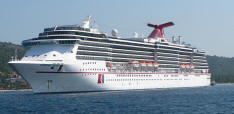Cruises R Fun! - Reviews of Cruise Lines, Cruise Ships, Destinations, Ports And More!
![]()






Cruising Alaska, A Visit To Juneau
Cruising Alaska On The Cruise Ship Princess Star
 |
 |
 |
 |
 |
 |
 |
 |
 |
 |
 |
 |
 |
 |
 |
 |
 |
 |
 |
 |
 |
 |
 |
 |
 |
 |
 |
 |
History
Juneau became the capital of Alaska in 1900, when the government of the then-Alaska Territory was moved from Sitka. The municipality unified in 1970 when the cit of June merged with the City of Douglas and the surrounding borough to form the current home rule municipality. It is the third largest city by population in the state, sitting in the heart of the Tongass National Forest and overlooking the Gastineau Channel.
Before the late Nineteenth Century, southeast Alaska was virtually unsettled. Only the Tlingit Natives utilized the area, coming to the Gastineau Channel to take advantage of the abundant salon found in the waters. Bu, in 1870 rumors of gold in the area began to circulate. A German engineer named George Pilz, who was already working in Sitka, decided to offer a handsome reward to any natives who could produce gold ore samples. When the Auk Tlingit Tribe's Chief Kowee responded to the Challenge, he handed Pliz rich ore samples his tribe had found from deep inside the mountains. Pilz was joined by prospectors Richard Harris and Joseph Juneau, who left Sitka in August of 1880 and headed for the new source of gold. They were led by three Native guides to the Sliver Bow Basin, where they discovered gold. Out of their discovery came a camp that eventually became Juneau. They revealed a one hundred mile belt of gold that stretched from Windham Bay to Berner's Bay River. When the team followed the gulch down from the summit of the mountain in the basin they discovered large pieces of quartz twinkling with gold. This was the first major Alaska gold discovery, but it would not be the last.
Gold fever led to gold production. By 1882, the world famous Treadwell mine was operational and expanding, and the Juneau area was populated with miners. Gold was what Juneau was all about, and within a decade of the Juneau / Harris discovery, wagon roads penetrated the valleys behind the camp-turned-town. Politics took center stage in Juneau from the beginning as well. Growth and development continued as the years rolled by, but eventually the gold streams played out for the individual prospectors. After only a few seasons the large mining and milling companies completely took over operations.
Mining remained a mainstay of Juneau's economy until 1944 when increased operating costs and manpower shortages associated with World War II forced the AJ mine to close. By then, the city had experienced a continuous rise in territorial government activity and employment. By 1959, when Alaska became the 49th state, government had filled much of the economic void left by the end of the mining era.
While many people made a fortune during the gold rush, Juneau and Harris never got rich from their discoveries. Juneau died broke in the Canadian Yukon and a collection had to be taken up to send his body hoe for burial along side Harris in the city they co-founded.
Today, Juneau is a popular tourist attraction where you can find evidence of Alaska's rich culture and of its early fur trading and gold mining history.
On The American Queen
On The Crown Odyssey
On The Millennium
On the Millennium More Millennium Our Itinerary Athens Greece Capri Italy The Ship Cyprus Greece Pictures of Italy Kusadasi Nice/Monaco Vatican City and Museum Cruise Food Ancient Egypt Egyptian Pyramids More Pyramids More Egypt Pictures Ancient Pompeii More Pompeii Ancient Rome The Coliseum Grand Buffet
On The Oosterdam
The Norwegian Sea
The Sapphire Princess
The Sapphire Princess
Ground Zero Vladivostok, Russia Pusan, South Korea The Tongdosa Temple Shanghai, China Dalian, China Travel To Beijing Beijing, China More Beijing The Pearl Market The Great Wall
of China A Cloisonné Factory The Forbidden City Tiananmen Square People Pictures People Pictures 2 Cruise Ship Food
Pictures Cruise Ship Pictures More Cruise Pictures Shopping in Beijing China
The Caribbean Princess
The HAL Oosterdam
The Carnival Spirit
Star Princess
Carnival Dream
